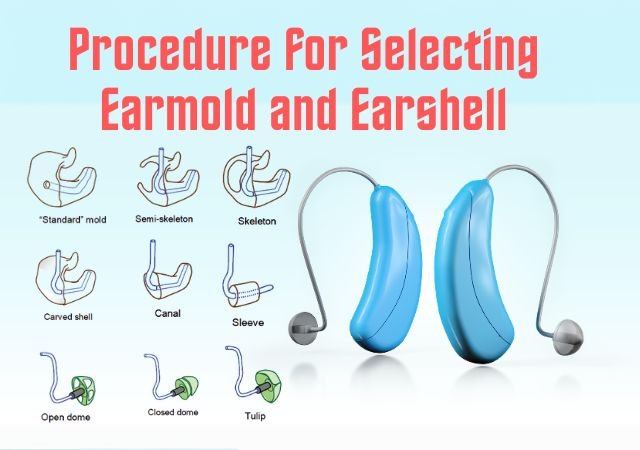Hearing Aid (HA) and its Components: Hearing aids are devices that boost sound levels so the patient can hear them. This process is called amplification. Most simply, a hearing aid amplifies sounds just like a megaphone, except the amplified sound is directed right into the listener’s ear. The Hearing Aid can be prescribed according to the type of hearing loss and degree of hearing loss
Components of Hearing Aid
It is easiest to think of a hearing aid in terms of its major parts, as shown in Figure.
- Microphone
- Amplifier
- Receiver
- Battery
- Earmold
- Ear hook
- Cords

Microphone
The hearing aid’s microphone picks up sounds and converts them into an electrical signal. A device that changes the form of energy is called a transducer. Thus, the microphone is an acoustic-to-electrical transducer. Typical hearing aid microphones have a sensitivity of about 16 mV per Pascal, which means that sounds of 70 dB SPL produce a voltage of around 1 mV.
Amplifier
Once the sound has been changed into an electrical signal it can be manipulated by electronic circuits. Obviously, the principal manipulation is to boost its intensity, that is, to amplify it. This is done by the amplifier. The amplifiers can do three things.
- First, they can make the voltage larger, but not affect the current.
- Second, they can make the current larger, but not affect the voltage.
- Third and most commonly, they can make both the voltage and the current larger.
The job of the amplifier is to take power from the battery and transfer it to the amplifier output in a manner controlled by the input signal. Thus, the output waveform (either voltage or current or both) is simply a larger version of the input waveform.
Receiver
The amplified electrical signal is then converted back into sound by an electrical-to-acoustic transducer or loudspeaker. The hearing aid’s loudspeaker is called the receiver. The amplified sound from the receiver is directed into the patient’s ear.
For a bone-conducting hearing aid, the receiver (vibrator) transduces the electrical voltage into mechanical vibration. For both air- and bone-conduction hearing aids, receivers had limited frequency response and could not be used successfully for individuals with high-frequency hearing loss.
Battery
The battery provides the power to accomplish all of the hearing aid’s functions. The battery is the source of the increased signal power that the hearing aid delivers to the aid wearer. The important characteristics of the battery are its voltage, its capacity, the maximum current it can supply, its electrical impedance, and its physical size.
Earmold
Earmold is the object inserted into the patient’s ear. The majority of modern hearing aids are completely contained within the earmold itself. Earmolds are almost always custom-made from an impression taken of the ear.
Ear hook
The ear hook is a removable extension of the hearing aid that “hooks” the top of the ear to hold the hearing aid in place (push the “View On-Ear” button). The ear hook also provides a connection between the output of the hearing aid’s speaker and flexible tubing that further directs sound into the ear canal.
Cords
Cords are wires usually found in a body-worn hearing aid that connects the main body of the earing aid with a receiver.
References:
- Hearing Aids – Harvey Dillon (Book)
- Essentials of Audiology – Stanley A. Gelfand, PhD (Book)
You are reading about:
Hearing Aid (HA) and its Components








0 Comments